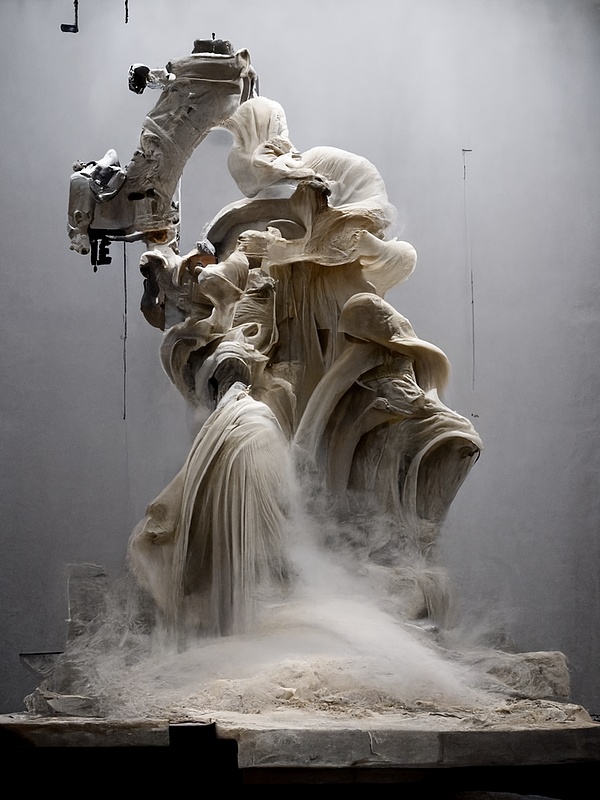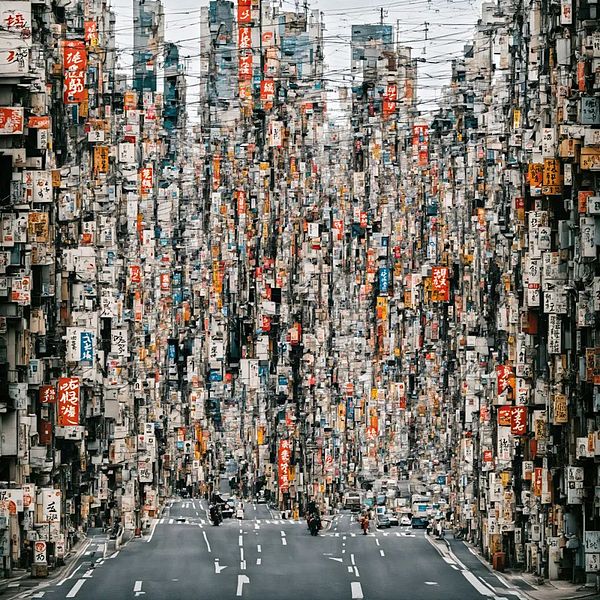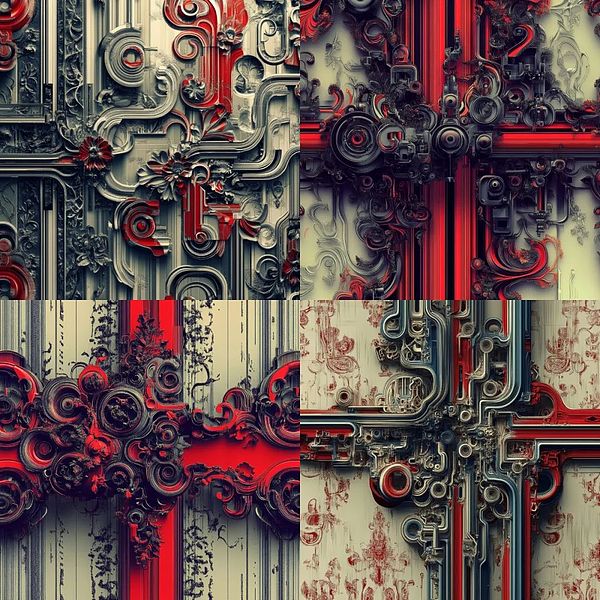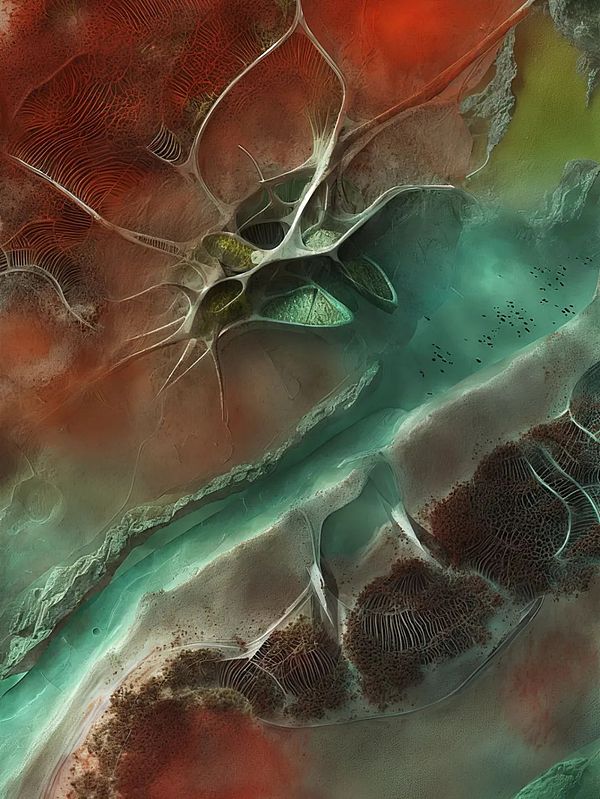Source: Quantum Number
Artificial intelligence is painting, writing novels, making videos, composing symphonies, and even designing buildings.
In the continuous evolution of architectural design, technology has always played a role in pushing boundaries. From the earliest drawing software to today's building information modeling tools, architects continue to use new tools to expand the possibilities of conception and expression. Today, artificial intelligence is intervening in this field in an unprecedented way, not only assisting design, but also becoming a medium for generating creativity and reshaping imagination.
Recently, in a new article, MIT Technology Review explored how artificial intelligence is redefining the boundaries of architectural theory and practice, and reviewed a series of experimental works in a recent exhibition at the Pratt Institute, presenting a new dialogue relationship being established between architects and intelligent systems. In these interactions, we not only see the potential vision of future architecture, but also rethink the meaning and methods of human creation.
Can artificial intelligence change everything we create?

Exploring aerodynamic structures with Stable Diffusion's Juggernaut XL. (Robert Lee Brackett III and Duks Koschitz)
After all, there is a huge difference between what real buildings allow as allowed by the laws of physics and what architects can imagine and design (often referred to as "paper architecture"). This imagination has long been supported and promoted by design technology, and recent advances in artificial intelligence have further stimulated the flourishing of theoretical design.

Karl Daubman, School of Architecture and Design, Lawrence Technological University
“The composite images produced by tools like Midjourney or Stable Diffusion often have a sense of freshness, combining features from multiple tools but rarely relying solely on any one of them,” Daubman said.
The recent exhibition “Conduction: Artificial Intelligence in Architectural Experiments” at Brooklyn’s Pratt Institute brings together the work of more than thirty practitioners to explore the experimental, generative, and collaborative potential of AI in architecture to open up new directions for architectural research. These researchers have been working in the field of artificial intelligence for a decade, long before it became mainstream. The works in “Transduction” emerge from feedback loops between architectural discourse, technology, form, and media: images, text, animation, mixed reality media, and digital fabrication, explain architects and exhibition co-curators Jason Vignelli-Bean, Olivia Wynne, Stephen Slaughter, and Hart Marlowe. The exhibition is not intended to showcase upcoming built projects—architects already have the tools at their disposal—but rather to document the field’s early days of exploring artificial intelligence.
Technology has long helped architecture push the boundaries of form and function. As early as 1963, Sketchpad, one of the earliest architectural design software, allowed architects and designers to move and modify objects on a screen. Traditional hand drawings are quickly being replaced by an ever-expanding array of software tools, such as Revit, SketchUp and BIM, which can help create plans and sections, track a building’s energy consumption, promote sustainable construction and aid compliance with building codes, to name a few.
Despite concerns among some of their peers about the technology, Vignelli-Bean, one of the exhibition’s curators, said the architects on display see emerging AI as “a new tool, not a career-changing technology.” “I understand that this technology can be unsettling, but I’m familiar with that narrative,” he added.
AI won’t do everything automatically, he said. “It takes a lot of time to get something from AI that’s really valuable and worth preserving,” he says. “My architectural language has become more precise, and my visual perception has been greatly exercised—things that were a little degraded have been reactivated.”
Wien agrees: “I think these are very powerful tools in the hands of architects and designers. Will it be the entire future of architecture? I don’t think so, but I believe it’s a tool and a medium that can expand the various media and methods that architects have long used—not only to present work, but also as a source of creativity.”

Andrew Kudless, Hines College of Architecture and Design
text="">This image is part of a series called “City Resolution,” where Stable Diffusion’s AI model “is unable to focus on constructing an image of reality, and instead repeats features that stand out in a local latent space,” Kudless explained.

Jason Vigneri-Bean, Pratt Institute
“These images are from a larger series about robot ecologies, which revolves around the process of co-creating with machines, imagining another kind of machine,” Bean said. “I might call them cryptozoological beasts—infrastructure robots that operate at an architectural scale.”Martin Summers, University of Kentucky College of Design“Most AI right now is competing to mimic reality,” Summers said. “I prefer to immerse myself in the distortions and misinterpretations, like image glitches and the underlying logic they reveal, that exist in mediated reality.” 14px;">Jason Lee, Pratt Institute
Lee typically uses AI “to generate iterative images or high-resolution sketches.” “I’m also experimenting to see how much realism I can incorporate into a more abstract approach,” he says.

Olivia Wein, Pratt Institute
For the series “Imprinted Places,” Wein created the images digitally before importing them into Midjourney. “This series takes the idea of Damascus textile patterns and recreates them in a more digital realm,” she says.

Robert Lee Brackett III, Pratt Institute
“While new software has raised concerns about the disappearance of traditional methods and tools, such as hand drawing and modeling, I see these technologies as collaborators, not replacements,” Brackett said.
 Miyuki
Miyuki










